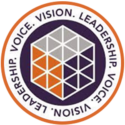Social media, in some form or another, has impacted society exponentially for the better part of two decades. Many who use it find that their brains are re-wired to function a certain way. Most individuals who use social media spend hours on end consuming content and media. This has a detrimental impact on the brain’s reward system; in extreme cases, this has been linked to substance abuse.
At Eagle Creek Ranch Recovery Recovery, our drug rehab in Idaho explores the connection between social media and drugs, and how it can lead to addiction.
How Does Social Media Influence Drug Use?
Social media platforms have a profound influence on drug use, particularly among adolescents and young adults. They often portray substance abuse as glamorous or harmless, thus potentially normalizing such behavior and making it seem acceptable or even desirable. Furthermore, social media platforms can provide easy access to drug-related information and even facilitate the procurement of substances. Consequently, individuals, particularly those who are impressionable or vulnerable, may be more likely to engage in drug use after exposure to such content or interactions on social media.
It is important for parents, educators, and other adults working with youth to be aware of the power of social media channels. Educating young people on the dangers associated with drug use and discussing the implications of engaging in such activities can help them make informed decisions. Additionally, monitoring their online activity can give adults an insight into what content they are exposed to and what behaviors they may be engaging in. Taking the time to understand their interests and concerns can also help to strengthen the relationship with them.
Understanding Social Media and Drug Use

Social media platforms can play a pivotal role in drug prevention strategies. By understanding the usage patterns and influence of social media, we can develop targeted awareness campaigns that resonate with young audiences. These platforms can be utilized to disseminate factual information about the dangers of drug use, personal stories of recovery, and resources for getting help. Moreover, since social media often glamorizes substance use, educating young people about the reality behind these misleading representations can promote critical thinking and smart decision-making in real-life situations.
Is Social Media Causing an Increase in Depression?
It’s difficult to say whether social media consumption increases depression among individuals; there are many variables. However, there are concerns about the rise of depression rates among young people who use social media. Extensive social media usage can lead to feelings of inadequacy, jealousy, and anxiety, which can be precursors to depression.
Depression in teens who use social media is often attributed to the tendency of users to compare their lives with the often idealized versions of life portrayed by others. Many individuals on social media tend to romanticize the little moments in their lives. However, it’s worth noting that while there’s a correlation, causation is not established; this warrants further research in the field.
Drug Addiction and Social Media: By the Numbers
The advent of social media has had a profound impact on various aspects of life, including drug use. According to a 2018 study by the National Institute on Drug Abuse, about 15.5 million people engaged in drug-related discussions on Twitter, with 1.8 million of these discussions specifically targeting marijuana use.
Teens who spend three hours a day on social media are 50% more likely to partake in substance abuse than those who do not. These statistics underline the undeniable correlation between social media exposure and drug use; this prompts a call for increased digital literacy and online safety measures.
To minimize the risk of substance abuse, it’s important to understand how drugs are being discussed on social media platforms. One way to do this is by studying the language used in drug-related posts and tweets. For example, slang terms such as “420” or “dabbing” may be used to casually reference marijuana use. Similarly, the terms “lean” or “sizzurp” are often used to refer to codeine-containing cough syrups. Knowing these slang terms can help inform the design of more effective drug prevention and education campaigns.
The Effects of Drugs and Social Media
Social media has a significant impact on society, simultaneously offering the potential for both positive connections and negative influences. Among the latter is its potential role in promoting drug use. As previously mentioned, there is a correlation between exposure to drug-related content on social media and increased likelihood of drug use.
These networking platforms can inadvertently glamorize drug consumption, create misperceptions about its prevalence, and reduce perceived risks. Consequently, these platforms may indirectly contribute to shaping social norms around drug usage, especially among impressionable youth audiences. However, to be fair, this is purely dependent on the content that each user “follows” or interacts with daily.
Media plays a significant role in shaping societal norms and behaviors, and its influence extends to substance abuse as well. The portrayal of substance use in advertisements, movies, and television shows often lacks the depiction of negative consequences; this unintentionally promotes a glamorized image of drug and alcohol use.
This normalization, coupled with the lack of educational content about the dangers of substance abuse, contributes to an environment conducive to misuse. Moreover, digital platforms are increasingly being exploited by illicit drug sellers. The exploitation of digital platforms further facilitates substance abuse.
To help offset the glamorization of substance use that is so often seen in the media, we can promote truthful messages about the harms and consequences associated with substances. This can include highlighting stories of people affected by drug misuse as well as providing educational content on how to recognize signs of addiction and how to seek help.
The “social media loop” is a phenomenon that can lead to a form of digital addiction. It refers to the cycle of constantly checking and rechecking social media platforms for updates, likes, and comments. This behavior is driven by the human brain’s reward system; each new notification or interaction triggers a dopamine release, creating a sense of pleasure and satisfaction. Unfortunately, this can lead to dependency, as individuals increasingly seek out these dopamine ‘hits’ through continual social media use. Over time, this can become a destructive cycle, impacting mental health, productivity, and real-life social interactions.
Risk Factors of Drugs and Social Media
There are many risk factors for addiction and social media, some of which include the following:
- Exposure to drugs and alcohol
- Comparing oneself to others
- Vulnerability to mental illnesses such as depression and anxiety
Social media platforms, while facilitating connectivity and communication, can sometimes lead to addictive behaviors. The addictive nature of social media can be attributed to several risk factors. These include the constant availability of the platforms, the use of likes or shares as a form of social validation, and the phenomenon of Fear of Missing Out (FOMO). Furthermore, the design features of social media platforms often encourage continuous scrolling and frequent checking for updates, which can also contribute to addiction.
Seeking Treatment for Drug and Alcohol Abuse

Kiss the Negative Cycle of Drugs and Social Media Goodbye
In a world increasingly interconnected through digital platforms, it’s crucial to recognize the potentially perilous cycle of social media and substance abuse. Kissing this behavior goodbye allows a person to embrace the path of mental well-being and personal growth. It is important to challenge the norms that glamorize substance use on these platforms and strive to spread awareness about the harm it inflicts. Social media should serve as a platform for positivity, inspiration, and meaningful connection, free from the grip of substance misuse.
Recover and Find Peace of Mind at Eagle Creek
These days it is difficult to find peace in all of the noise; it can be too loud to find a sense of calm and tranquility. This is especially true as it relates to social media and drug abuse. At Eagle Creek Ranch Recovery Recovery, we get it. We offer comprehensive treatment for those who feel they need to find a better path forward. If you or a loved one would like to find out more, you can contact us here.

Clinical Director
Kendall Maloof is the clinical director at Eagle Creek Ranch Recovery. She is a licensed marriage and family therapist and has held multiple leadership roles before settling here at Eagle Creek Ranch Recovery. Kendall received her master’s degree in marriage and family therapy from the Chicago School of Professional Psychology in 2016. Her career in mental and behavioral health began in 2014 when she took up internships in both the nonprofit and for profit sectors. She interned at multiple reputable companies, such as The Living Success Center and 449 Recovery in California.
In 2019, Kendall became the clinical director of Sunsets Recovery for Woman, a dual diagnosis program in southern California. Kendall is a natural leader. She has an incredible ability to problem solve and stay calm in any situation. Kendall never fails to show up when she is needed, and her calm demeanor makes her team and clients feel at ease. Eagle Creek Ranch Recovery is proud to have Kendall as our clinical director.



